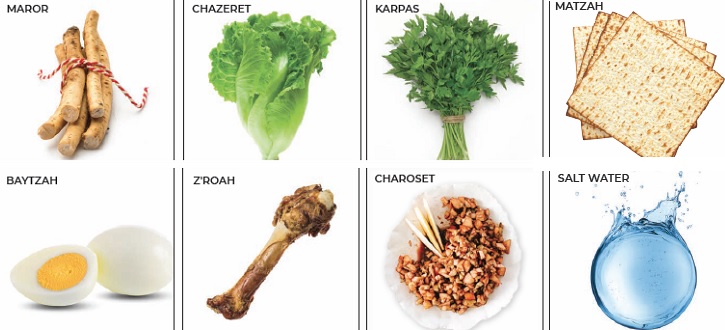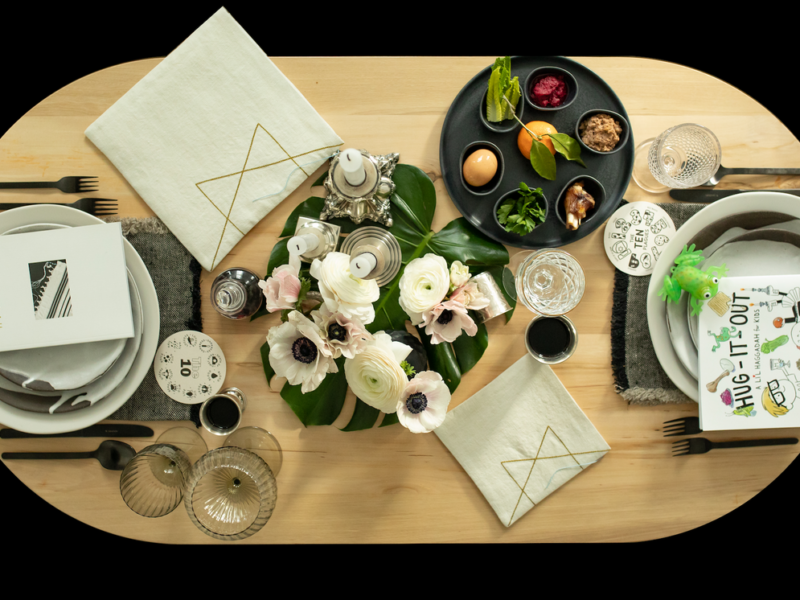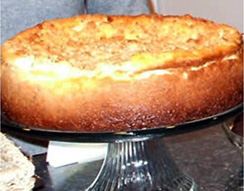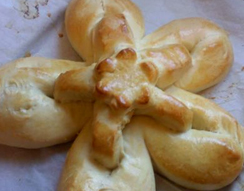By InterfaithFamily
The ritual foods of Passover tell the biblical story of the Exodus from Egypt and the story of the ancient rabbis who wrote the Haggadah.
“During the seder, we don’t just tell the story of the Exodus, we see, smell, feel and taste liberation,” says Rabbi Jill Jacobs.
What follows is a brief description of many of the special foods of Passover.
First, let’s focus on the foods that are placed on a ceremonial plate, usually in the middle of the table or somewhere where everyone can easily see it. This special plate is called the seder plate. The traditional foods on this plate are:
Maror – a bitter herb, often horseradish, or bitter greens like chicory or endive. It’s supposed to be uncomfortably hot! It represents the bitterness of slavery. Some people take a “maror challenge” using very, very hot horseradish.
Chazeret – a bitter vegetable or green, often Romaine lettuce. It’s also a symbol of the bitterness of slavery, but it gets used in a different part of the seder than the maror.
Karpas – a leafy green, very often parsley. Represents the rebirth of spring.
Baytzah – a roasted egg. Also represents the rebirth of spring and the national birth, or rebirth, of the Jewish people from out of the constraints of bondage. The roasting recalls the Passover sacrifice brought to the Temple in Jerusalem in ancient times.
Z’roah – a shank bone of a lamb. Represents the Passover offering of a lamb made at the ancient Temple in Jerusalem in the early spring. Sometimes a chicken neck is substituted, and in vegetarian homes, a beet or a carrot may be substituted.
Charoset – is a sweet, thick or chunky fruit and nut spread that symbolizes the mortar that Jewish slaves used in their hard labors building cities and brick buildings for the Pharaohs. Jews of European descent usually make it with apples, nuts, honey, sweet wine and cinnamon. Jews from other lands have other ingredients, but it is always ground or chopped to resemble mortar, and is usually brown in overall color.
In some more liberal Jewish households, people add other symbolic foods to their seder plates to call attention to issues of oppression, liberation, justice and inclusivity. Two of these new items that growing numbers of Jews are adding to their seder plates are:
An orange – Putting an orange on the seder plate was an idea originated by Dr. Susannah Heschel in the 1980s. It represented the inclusion of LGBTQ and other marginalized people in the Jewish community, and the fruitfulness that these members of the community bring to Jewish life. Somehow, the new custom she shared with her guests morphed into a fast-traveling urban legend, and the story changed so that the orange was said to represent the inclusion of women in Jewish religious leadership roles. Today, for many, the orange symbolizes all of the above.
Olives are sometimes included as a call for peace between Israelis and Palestinians.
Other symbolic foods have been added to the seder plate over the years – Passover is a very flexible holiday, and different families and communities adapt it to their concerns and passions. There are also important symbolic foods on the Passover seder table that aren’t placed on the seder plate.
Matzah is unleavened bread – flat, porous, crumbly and pretty tasteless. It is the primary story-telling food at Passover. It is the only bread that is eaten with a Passover seder meal and throughout the weeklong holiday. The plural of the Hebrew word matzah is matzot, with a long “o” sound.
According to the Exodus story, the enslaved ancestors of the Jewish people hurried to flee Egypt once Pharaoh had finally agreed to let them go. They wanted to bring provisions with them, including bread that was baking in communal ovens. But in their desperate haste to get out of Egypt before the Pharaoh changed his mind, their bread didn’t have time to rise, so the slaves took it as it was, flat and dry, and hurried towards freedom. For the whole week of Passover, the tradition is for Jews to refrain from eating bread or baked goods that have had time to rise – that are leavened – and instead to eat only matzah, which is also known as “the bread of slavery,” “the bread of poverty” and “the bread of affliction.”
At the beginning of the seder, the hosts place three matzot, piled on top of each other, on a plate. Some families have a cloth matzah cover, which has three cloth partitions inside; so that you can slide one piece of matzah into each of the interior sections. During the seder, there’s a point at which we take the middle matzah and break it in half. Apart from the three pieces of matzah that are used ceremonially during the seder, people also have lots of boxes or platters of matzah on the table so that everyone can have however much they want during the festive meal.
Salt water – people place one or more bowls of salt water on the table for the seder. At one point early in the seder, there’s a ritual activity in which everyone dips the green vegetable from the seder plate into the salt water and eats it. The salty water represents the tears of slaves, as well as the waters of the Red Sea that parted so the Jews could cross into freedom.
This article is reprinted with permission from InterfaithFamily, supporting Jewish interfaith couples and families. Learn more at interfaithfamily.com.






